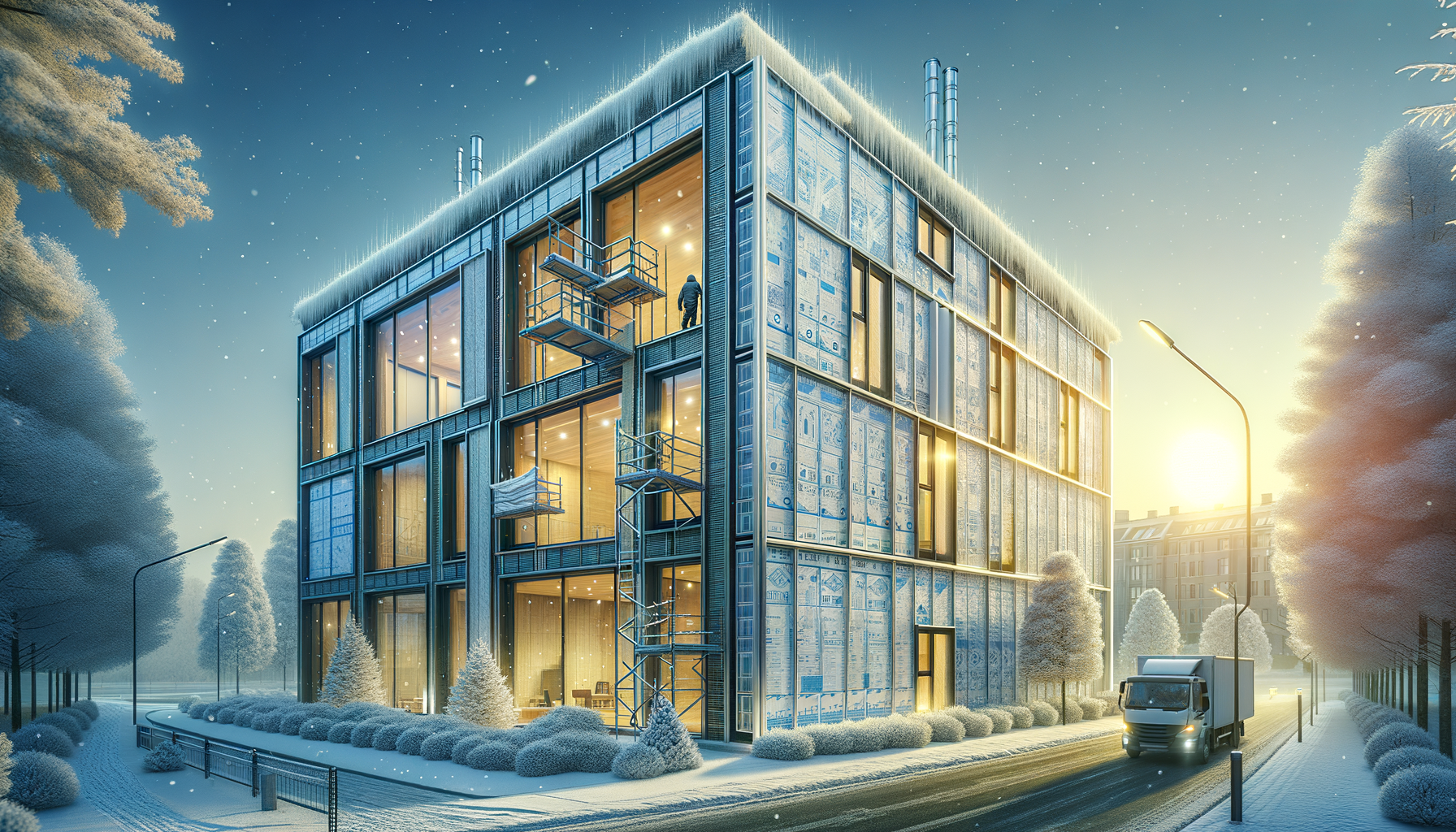
Improve Your Structure’s Energy Efficiency with Insulated Wall Panels
Understanding Insulated Wall Panels
Insulated wall panels are an innovative solution designed to enhance the energy efficiency of buildings. These panels consist of a rigid foam core sandwiched between two layers of structural board, offering excellent thermal insulation. The primary materials used for the foam core include expanded polystyrene, polyurethane, and polyisocyanurate. Each material provides varying levels of insulation, with polyurethane and polyisocyanurate being particularly effective due to their higher R-values.
One of the key benefits of insulated wall panels is their ability to reduce thermal bridging, a common issue in traditional construction where heat escapes through less insulated parts of a building envelope. By providing a continuous layer of insulation, these panels help maintain a consistent indoor temperature, reducing the need for excessive heating or cooling. This not only enhances comfort but also significantly lowers energy consumption.
Moreover, insulated wall panels are known for their durability and ease of installation. They are prefabricated, which means they can be quickly assembled on-site, reducing construction time and labor costs. Their lightweight nature also minimizes the structural load on buildings, making them suitable for both new constructions and retrofitting projects.
Energy Efficiency and Environmental Impact
Improving energy efficiency in buildings is crucial for reducing environmental impact and lowering utility bills. Insulated wall panels play a significant role in achieving these goals. By enhancing thermal performance, these panels reduce the demand for heating and cooling systems, leading to lower greenhouse gas emissions. This is particularly important in urban areas where buildings are a major source of carbon emissions.
Additionally, the production of insulated wall panels often involves sustainable practices. Many manufacturers use recycled materials and environmentally friendly processes, contributing to a reduced carbon footprint. Furthermore, these panels can be recycled at the end of their life cycle, aligning with circular economy principles.
For building owners and developers, investing in insulated wall panels can lead to significant long-term savings. The reduction in energy bills can offset the initial investment cost over time, making it a financially viable option. Moreover, buildings with high energy efficiency ratings often have increased property value and marketability, attracting environmentally conscious tenants and buyers.
Comparing Insulated Wall Panels with Traditional Insulation
When comparing insulated wall panels with traditional insulation methods, several factors come into play. Traditional insulation, such as fiberglass or mineral wool, is often installed between wall studs, leaving gaps that can lead to thermal bridging. In contrast, insulated wall panels provide a continuous insulation layer, eliminating these gaps and improving overall thermal performance.
Another advantage of insulated wall panels is their higher R-value per inch compared to traditional insulation. This means they offer better insulation with less material, making them ideal for projects where space is a concern. Additionally, their prefabricated nature ensures consistent quality and reduces the risk of installation errors that can compromise insulation effectiveness.
However, it’s important to consider the specific needs of a project when choosing between insulated wall panels and traditional insulation. Factors such as budget, design requirements, and local climate conditions should be taken into account. While insulated wall panels offer superior energy efficiency, traditional insulation might be more suitable for certain applications due to its lower initial cost.
Applications and Versatility of Insulated Wall Panels
Insulated wall panels are incredibly versatile and can be used in a wide range of applications. They are suitable for both residential and commercial buildings, including schools, hospitals, and office spaces. Their adaptability allows them to be used for exterior walls, interior partitions, and even roofing systems.
In residential settings, insulated wall panels are often used in energy-efficient homes and passive house designs. These homes prioritize airtight construction and high insulation levels to minimize energy consumption. The panels’ ability to provide continuous insulation makes them an ideal choice for achieving these standards.
In commercial and industrial applications, insulated wall panels offer additional benefits such as fire resistance and soundproofing. This makes them suitable for environments with specific safety and acoustic requirements, such as factories and recording studios. Their aesthetic versatility also allows architects and designers to incorporate them into various styles and finishes, enhancing the visual appeal of a building.
Conclusion: The Future of Building with Insulated Wall Panels
As the demand for energy-efficient buildings continues to grow, insulated wall panels are poised to play a pivotal role in the construction industry. Their ability to enhance thermal performance, reduce environmental impact, and offer versatile applications makes them a valuable asset for modern building projects.
For architects, builders, and property owners, embracing insulated wall panels can lead to significant benefits, including reduced energy costs, improved comfort, and increased property value. As technology advances and sustainable practices become more prevalent, the adoption of insulated wall panels is likely to increase, paving the way for a more energy-efficient and environmentally conscious future.

